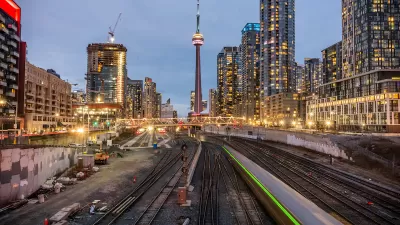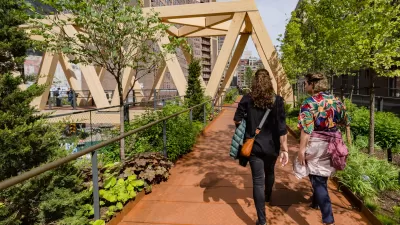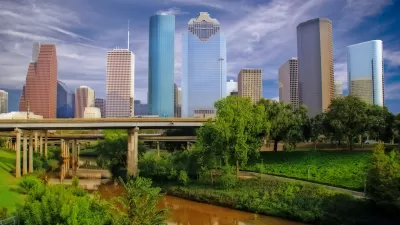Metropolis Magazine examines the 21st century efforts at creating wild places in cities, exemplified by the Buffalo Bayou Promenade in Houston and the Passaic River in Newark.
Writer Karrie Jacobs starts the article by contrasting today’s efforts at creating wild or natural environments in cities with the escapist goals of Olmsted’s Central Park. “What’s happening today is different. Twenty-first century metropolitan nature is about embracing the city, not fleeing it,” says Jacobs. (To be fair to Olmsted's perspective, recent research suggests that a more immersive park experience is necessary to overcome the "cognitive strains" of urban life.)
Jacobs quotes a luminary no less than Robert Hammond, “one of the activists who conjured the High Line into being,” to further that point: “Central Park was meant to be an escape…On the High Line, you’re in nature, but you can hear the traffic; you can see the Empire State Building.”
Jacobs admits that she’s most ”most fascinated by the taming of harsh neighborhood cleavings created by overhead roadways and rail lines,” and identifies the orientation of the High Line, rather than its form or even structures, as the idea most worth emulating in other cities:
“Every city doesn’t need an elevated linear park, nor should every old railroad viaduct be converted for recreational use. But there are features of our cities that we commonly regard as eyesores that should instead be valued as part of our unnatural natural environment. We can find ways to immerse ourselves in these oddities as if they were the uncanny rock formations of some southwestern canyon. Even the most obstructive, no-man’s-land-generating form of urban infrastructure—the elevated expressway—can, with skill and imagination, be incorporated into metropolitan nature.”
FULL STORY: Unnatural Nature

Planetizen Federal Action Tracker
A weekly monitor of how Trump’s orders and actions are impacting planners and planning in America.

Chicago’s Ghost Rails
Just beneath the surface of the modern city lie the remnants of its expansive early 20th-century streetcar system.

San Antonio and Austin are Fusing Into one Massive Megaregion
The region spanning the two central Texas cities is growing fast, posing challenges for local infrastructure and water supplies.

Since Zion's Shuttles Went Electric “The Smog is Gone”
Visitors to Zion National Park can enjoy the canyon via the nation’s first fully electric park shuttle system.

Trump Distributing DOT Safety Funds at 1/10 Rate of Biden
Funds for Safe Streets and other transportation safety and equity programs are being held up by administrative reviews and conflicts with the Trump administration’s priorities.

German Cities Subsidize Taxis for Women Amid Wave of Violence
Free or low-cost taxi rides can help women navigate cities more safely, but critics say the programs don't address the root causes of violence against women.
Urban Design for Planners 1: Software Tools
This six-course series explores essential urban design concepts using open source software and equips planners with the tools they need to participate fully in the urban design process.
Planning for Universal Design
Learn the tools for implementing Universal Design in planning regulations.
planning NEXT
Appalachian Highlands Housing Partners
Mpact (founded as Rail~Volution)
City of Camden Redevelopment Agency
City of Astoria
City of Portland
City of Laramie





























